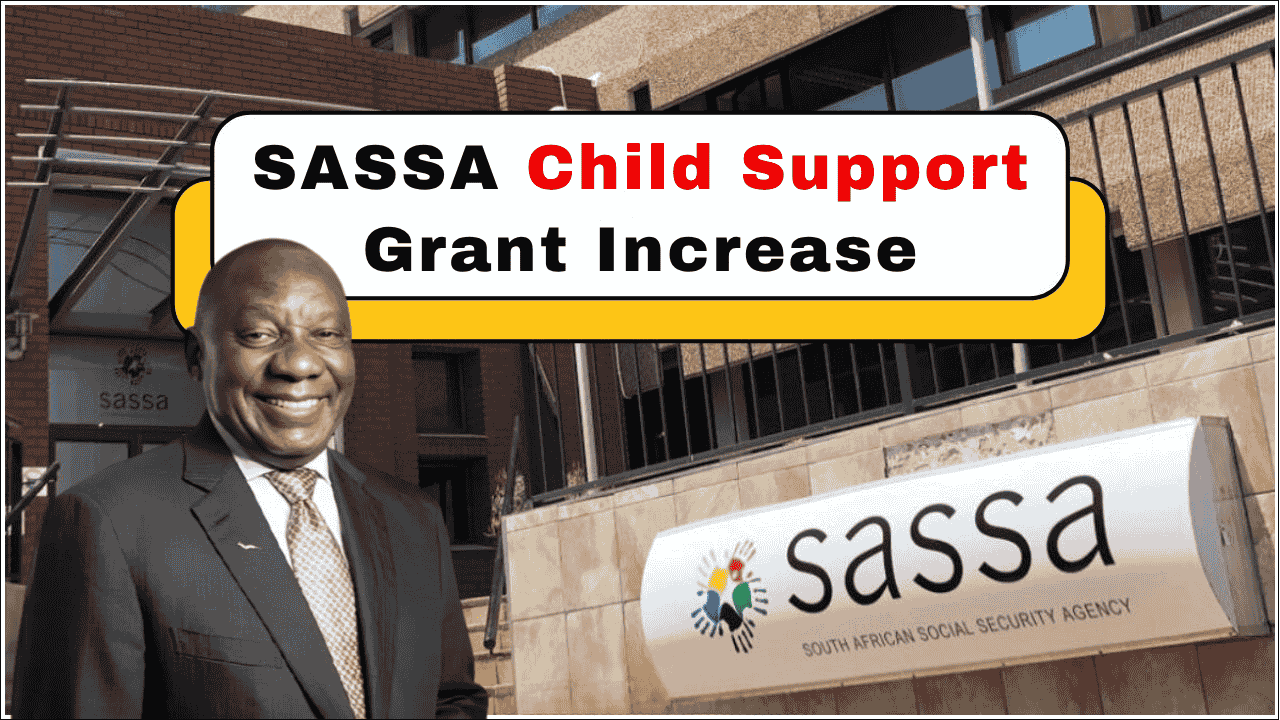
The South African government has unveiled an ambitious homeowner assistance program that promises to deliver monthly financial support of R1,400 to qualifying property owners beginning June 2025. This comprehensive relief initiative represents a significant intervention designed to address the mounting financial pressures facing middle and lower-income households across the nation, particularly those struggling with property-related expenses amid challenging economic conditions.
The new homeowner relief scheme emerges as part of the government’s broader economic stabilization strategy, aimed at preventing a potential housing crisis while supporting vulnerable families who are experiencing difficulties maintaining their properties. With rising interest rates, escalating municipal service costs, and persistent inflation affecting household budgets, this program provides crucial breathing room for property owners who might otherwise face foreclosure or financial distress.
This initiative demonstrates the government’s recognition that homeownership, traditionally viewed as a pathway to financial stability, has become increasingly burdensome for many South African families. By providing direct monthly assistance, authorities aim to preserve homeownership while strengthening the overall residential property market.
Economic Context and Program Rationale
The decision to implement this homeowner relief program stems from comprehensive analysis of economic pressures currently affecting South African households. Property owners across the country are grappling with multiple financial challenges that threaten their ability to maintain homeownership and meet basic living standards.
Primary Financial Pressures Driving Relief Initiative
| Expense Category | Impact on Households | Monthly Cost Increase |
|---|---|---|
| Mortgage Payments | Higher repayments due to interest rate increases | 15-25% over past 18 months |
| Municipal Services | Water, electricity, and waste management costs | 8-12% annually |
| Property Maintenance | Essential repairs and upkeep expenses | 10-15% due to material costs |
| Insurance Premiums | Home and contents insurance | 7-10% annual increases |
| Property Taxes | Municipal rates and taxes | 5-8% regional variations |
The relief program addresses these compounding pressures by providing direct financial assistance that homeowners can allocate according to their most pressing needs. This flexible approach ensures maximum benefit across diverse household circumstances.
For comprehensive information about government housing initiatives, visit the official Department of Human Settlements website: https://www.dhs.gov.za
Program Structure and Financial Benefits
The homeowner relief initiative provides substantial monthly assistance designed to meaningfully impact household budgets while remaining fiscally sustainable for government implementation.
Monthly Relief Package Details
| Support Component | Financial Value | Distribution Method | Additional Benefits |
|---|---|---|---|
| Direct Cash Payment | R1,400 monthly | Bank deposit | Immediate liquidity |
| Municipal Account Credit | Up to R1,400 monthly | Applied to service bills | Automatic bill reduction |
| Program Duration | 12-month initial phase | Monthly disbursements | Renewable based on review |
| Total Annual Support | R16,800 per household | Consistent monthly payments | Predictable financial planning |
Recipients can choose their preferred payment method during the application process, allowing them to optimize the relief according to their specific financial circumstances. This flexibility ensures the program serves diverse household needs effectively.
Provincial Implementation Timeline
The rollout of the homeowner relief program follows a carefully planned provincial schedule designed to ensure systematic implementation while managing administrative capacity effectively.
Comprehensive Provincial Launch Schedule
| Province | Implementation Date | Administrative Center | Projected Beneficiaries | Special Considerations |
|---|---|---|---|---|
| Gauteng | June 10, 2025 | Johannesburg SASSA Centre | 820,000 households | Urban homeowner focus |
| KwaZulu-Natal | June 12, 2025 | Durban Regional Office | 740,000 households | Coastal and rural priority |
| Western Cape | June 13, 2025 | Cape Town Head Office | 620,000 households | Agricultural worker inclusion |
| Eastern Cape | June 14, 2025 | Gqeberha District Office | 560,000 households | Informal settlement support |
| Limpopo | June 15, 2025 | Polokwane Regional Center | 490,000 households | Rural municipality emphasis |
| Mpumalanga | June 16, 2025 | Mbombela Provincial Office | 430,000 households | Disaster-affected area priority |
| North West | June 17, 2025 | Mahikeng Service Centre | 410,000 households | RDP homeowner focus |
| Free State | June 18, 2025 | Bloemfontein Headquarters | 390,000 households | District-wide coordination |
| Northern Cape | June 19, 2025 | Kimberley Regional Office | 210,000 households | Phased rural implementation |
This staggered approach allows each provincial administration to properly prepare systems and staff while ensuring beneficiaries receive timely, efficient service delivery.
For updates on SASSA services and programs, visit: https://www.sassa.gov.za
Comprehensive Eligibility Framework
The homeowner relief program targets specific demographic groups while maintaining broad accessibility for qualified property owners experiencing financial hardship.
Primary Qualification Criteria
| Eligibility Factor | Specific Requirements | Documentation Needed |
|---|---|---|
| Citizenship Status | South African citizen or permanent resident | Valid ID document or permanent residence permit |
| Property Ownership | Own or financing residential property | Title deed or bond agreement |
| Income Parameters | Monthly household income R7,000-R25,000 | Recent payslips or pension statements |
| Municipal Accounts | Active property-related municipal accounts | Current municipal bills in applicant’s name |
| Subsidy Exclusion | No other government housing subsidies | Declaration of current government assistance |
Additional Qualifying Circumstances
The program recognizes diverse homeownership situations and includes provisions for various property types and household compositions:
| Household Type | Special Considerations | Additional Support |
|---|---|---|
| Pensioner Homeowners | Fixed income households | Simplified documentation process |
| Employed Property Owners | Formal sector workers | Standard application procedures |
| Social Grant Recipients | Existing SASSA beneficiaries | Integrated application systems |
| Rural Property Owners | Agricultural and traditional housing | Mobile application assistance |
| Disabled Homeowners | Accessibility requirements | Specialized support services |
For detailed eligibility information and application guidance, consult: https://www.gov.za/services
Streamlined Application Process
The government has designed multiple application channels to ensure accessibility across urban and rural communities while maintaining security and efficiency.
Application Submission Methods
| Application Channel | Accessibility | Processing Time | Support Available |
|---|---|---|---|
| Online Portal | 24/7 digital access | 5-7 business days | Live chat support |
| Municipal Offices | Business hours, local access | 3-5 business days | In-person assistance |
| Community Centers | Extended hours, neighborhood access | 7-10 business days | Volunteer support |
| Mobile Application Units | Scheduled visits to remote areas | 10-14 business days | Full-service support |
Required Documentation Checklist
| Document Category | Specific Requirements | Purpose |
|---|---|---|
| Identity Verification | South African ID or smart card | Citizenship confirmation |
| Income Proof | Payslips, pension slips, or sworn affidavit | Financial qualification |
| Property Documentation | Title deed or bond account statements | Ownership verification |
| Municipal Bills | Recent bills in applicant’s name | Service account confirmation |
| Banking Information | Account details for direct deposits | Payment processing |
The documentation requirements ensure program integrity while remaining accessible to applicants with varying levels of formal documentation.
Payment Distribution System
SASSA, in collaboration with the Department of Human Settlements, has established a robust payment infrastructure designed to deliver reliable monthly support to approved beneficiaries.
Payment Schedule and Methods
| Payment Month | Distribution Window | Payment Options | Confirmation Method |
|---|---|---|---|
| June 2025 | 15-20 June | Bank transfer or municipal credit | SMS notification |
| July 2025 | 5-10 July | Continued monthly disbursement | Email confirmation |
| August 2025 | 5-10 August | Regular payment cycle | Online account update |
| September 2025 | 5-10 September | Ongoing monthly support | Mobile app notification |
| October 2025 | 5-10 October | Continued relief payments | Automated confirmation |
| November 2025 | 5-10 November | Monthly disbursement | Multi-channel notification |
| December 2025 | 5-10 December | Year-end payment | Comprehensive statement |
The early-month payment schedule aligns with typical household expense cycles, ensuring recipients can effectively manage their monthly financial obligations.
Late Application Accommodation
Recognizing that not all eligible homeowners may immediately access application systems, the program includes provisions for late applications while maintaining program integrity.
Late Application Framework
| Application Period | Eligibility | Back-Payment Provision | Processing Timeline |
|---|---|---|---|
| Standard Period | June 1-30, 2025 | Full benefits from June | 5-7 business days |
| Extended Period | July 1-August 31, 2025 | Retroactive payments possible | 10-14 business days |
| Final Deadline | August 31, 2025 | Case-by-case review | 15-21 business days |
This flexibility ensures that administrative delays or lack of initial awareness don’t prevent eligible homeowners from accessing crucial support.
Program Oversight and Accountability
The homeowner relief initiative incorporates comprehensive monitoring and evaluation mechanisms to ensure effective implementation and identify areas for improvement.
Accountability Measures
| Oversight Function | Responsible Agency | Monitoring Frequency | Public Reporting |
|---|---|---|---|
| Payment Distribution | SASSA | Weekly | Monthly reports |
| Fraud Prevention | Department of Human Settlements | Ongoing | Quarterly updates |
| Beneficiary Satisfaction | Independent monitors | Monthly surveys | Bi-annual assessment |
| Financial Impact | National Treasury | Monthly | Annual comprehensive review |
For transparency and accountability information, visit: https://www.treasury.gov.za
Long-term Program Sustainability
The initial 12-month implementation period serves as a pilot phase, allowing government to assess program effectiveness and determine long-term sustainability based on economic conditions and beneficiary outcomes.
Program Evaluation Criteria
| Assessment Factor | Measurement Method | Success Indicators |
|---|---|---|
| Foreclosure Prevention | Property market analysis | Reduced default rates |
| Municipal Revenue | Service payment tracking | Improved collection rates |
| Household Stability | Beneficiary surveys | Enhanced financial security |
| Economic Impact | Macroeconomic analysis | Positive housing market indicators |
Conclusion
The R1,400 monthly homeowner relief program represents a significant government intervention designed to address immediate household financial pressures while supporting broader economic stability. Through comprehensive provincial implementation, flexible payment options, and inclusive eligibility criteria, this initiative promises to provide meaningful support to vulnerable homeowners across South Africa.
The program’s success will depend on effective implementation, broad community awareness, and continued government commitment to supporting homeownership as a pathway to household financial stability. For eligible homeowners, this relief offers crucial support during challenging economic times while contributing to broader housing market stability.
By providing direct financial assistance, the government acknowledges the vital role homeownership plays in South African society while taking concrete steps to ensure that economic pressures don’t force families from their homes. This comprehensive approach to household financial support represents a significant step toward economic resilience and social stability.
Frequently Asked Questions
How much monthly relief will qualifying homeowners receive? Eligible homeowners will receive R1,400 per month for 12 months, totaling R16,800 in annual support.
Do I need to apply separately if I already receive SASSA grants? Yes, homeowner relief requires a separate application even if you receive other SASSA benefits like pensions or disability grants.
Can I choose how to receive my R1,400 monthly payment? Yes, you can select either direct bank deposit or automatic credit to your municipal service account during application.
Will this relief affect my eligibility for other government benefits? No, the homeowner relief is non-taxable and won’t impact your eligibility for other social grants or government assistance programs.







